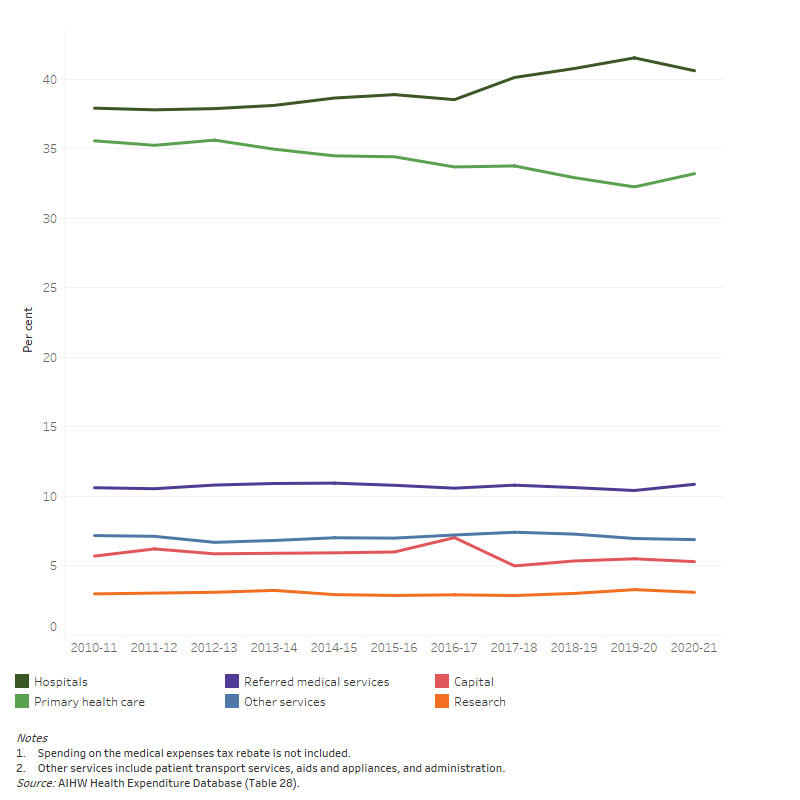Spending trends by areas of spending
In 2020–21, total health spending was distributed across health services, with estimates of:
- 40.6% ($89.7 billion) on hospitals
- 33.2% ($73.4 billion) on primary health care
- 10.9% ($24.0 billion) on referred medical services.
The remaining 15.3% or $33.8 billion, was on other services, research and capital spending (Figure 23).
Over time, spending on hospitals has tended to increase faster than spending on primary health care, however, this appeared to shift during the pandemic, when spending on primary health care (including public health) increased more quickly than spending on hospital services.
Figure 23: Proportion of total health spending, by area of expenditure, current prices, 2010–11 to 2020–21
The line graph shows that the proportion of total health spending spent on each area of spending remained relatively stable between 2010–11 and 2020–21. Hospitals and primary health care attracted the most funding over the decade. In 2020–21, hospitals received 40.6 per cent of total health spending, followed by primary health care received 33.2 per cent. In the same year, referred medical services attracted 10.9 per cent of total funding; other services received 6.9 per cent, and research receiving 3.1 per cent. The proportion of funds allocated to capital spending over the decade was most volatile, at 7 per cent in 2016–17 compared with 5.3 per cent in 2020–21.



